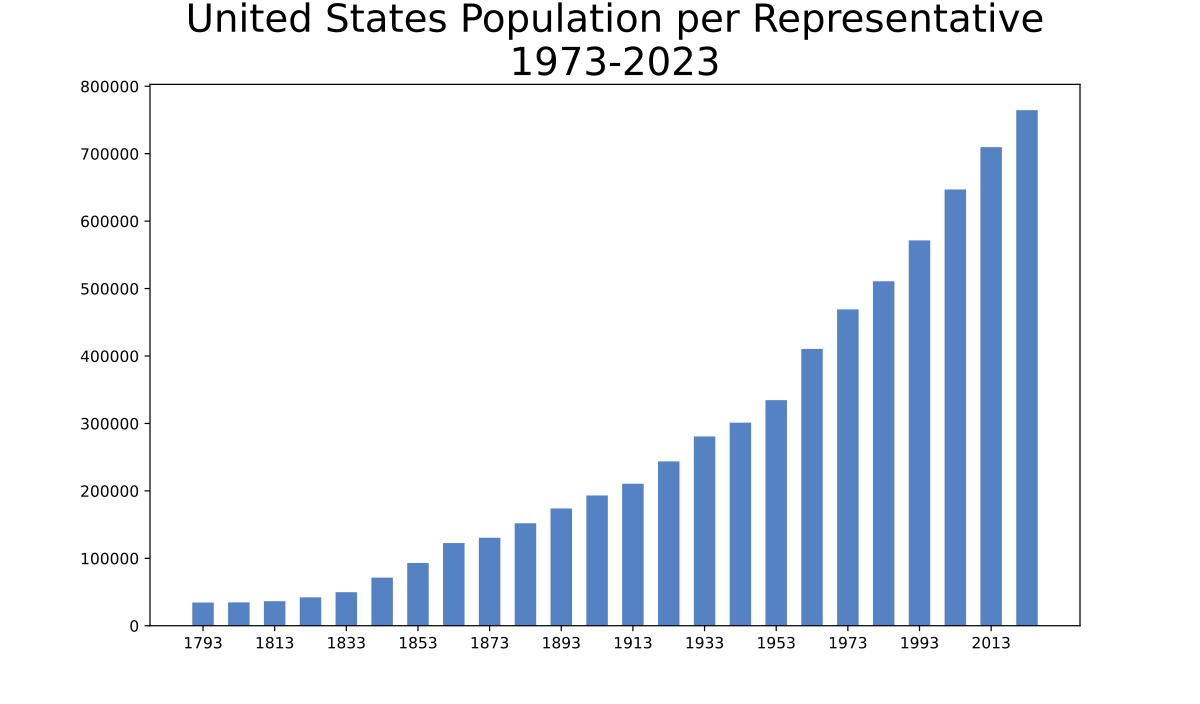Holy sh*t. Senator Bennet absolutely annihilated RFK Jr. and exposed him for what he really is—an anti-vaxxer crackpot and grifter. In the pre-Trump era, this would have been the end of his nomination, and he would have withdrawn immediately.pic.twitter.com/Mmu6Ic23Vn
— Republicans against Trump (@RpsAgainstTrump) January 29, 2025
.@SenatorHassan's comments about her own child get at something that's rarely discussed when we talk about Kennedy's anti-vaccine industry and the "autism warrior moms" that power his movement. It's predatory and diverts resources from actual research and treatments. pic.twitter.com/ULxiM4ligS
— Brandy Zadrozny (@BrandyZadrozny) January 30, 2025
Questions on the assignment?
For Tuesday, read Davidson, ch. 3 and 4.
Email me your reflections by tonight.
The size of Congress (Davidson 28-29)

, CC BY-SA 4.0, Link
The relevant constitutional provision is Article 4, section 3:
New States may be admitted by the Congress into this Union; but no new States shall be formed or erected within the jurisdiction of any other State; nor any State be formed by the Junction of two or more States, or parts of States, without the Consent of the Legislatures of the States concerned as well as of the CongressThat’s right. All it takes to create a new state is the passage of a federal law. Right now, assuming they were willing to use the nuclear option to abolish the filibuster for state admissions, any unified government could make Puerto Rico or DC a state, or (with the consent of the state leg) divide Texas (or Wyoming) into any number of states. WIth just a law. Irreversibly. And the constitution puts no population or land size constraints on the process either.
These three features of the statehood process—irreversibility, a low threshold for creation, and no population/size constraints on the creation of a state—made the statehood process incredibly destabilzing in the 19th century. Any majority, at any time, could rearrange the balance of power in the legislature and the electoral college. And it unambiguously exacerbated the slave crisis: so many of the major flashpoints over slavery between 1820 and 1860 involved the flawed statehood process: the Missouri Compromise, the Compromise of 1850, the Kansas-Nebraska Act, the Lecompton Constitution fight, even the Dred Scott decision.
"Institutionalization" (Davidson, pp. 26-27)
- "Well-bounded": Membership and leadership in the House has been increasingly walled-off. Incumbents tend to serve longer and leadership positions go to the most senior incumbents
- "Internally complex": House functions have been regularized and specialized: committees, leadership, staff.
- Universalistic: The House now follows impersonal, universal decision criteria rather than particularistic criteria. "Precedents and rules are followed; merit systems replace favoritism and nepotism" (p 145) When the House makes a judgment about a contested election, the decision rests on the case's merits, not on partisan lines.



No comments:
Post a Comment